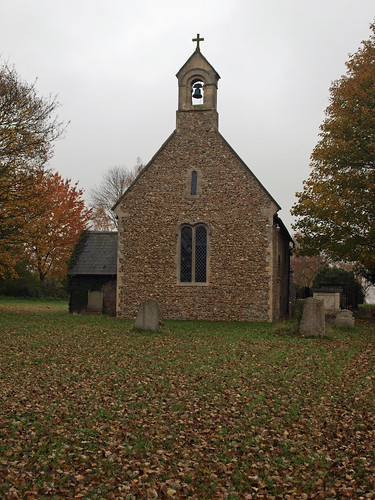ST MARGARET. Nave and chancel, and C19 bellcote. In the W wall of the nave an odd two-light window which may be of the C17 and above it a small Norman window. In the S wall restored Norman doorway with two orders of columns. The capitals are scalloped, one column is zigzag carved. The lintel is curved, the tympanum has a diaper pattern. Zigzag arches and a billet hood-mould. Norman windows on the N and S sides of the nave. The chancel windows are late C14. Inside the chancel a low ogee-arched recess and damaged Sedilia and Piscina, also a corbel S of the (C19) E window with a caryatid demi-figure. - FONT. Octagonal, Perp, with traceried stem and quatrefoils with shields on the panels. - DOORS in chancel and nave with some ironwork of c. 1200. - PLATE. Cup of 1562; Paten probably of 1562.
Arthur liked it too:
The 14th century masons who rebuilt the chancel have left us some portraits, a man’s head on a corbel, and two on the sedilia, where a rude man with his mouth open keeps company with a mitred bishop. The panelled font and the lovely arch over the founder’s tomb were their work. The smiths of seven centuries ago also left their handiwork here, in ornamental iron on the door and in the ornament on a chest dug out of an oak tree in the 14th century. The chest has 13 strong bands and fleur-de-lys patterns wrought in iron; it is ten feet long and three feet wide and deep.


No comments:
Post a Comment